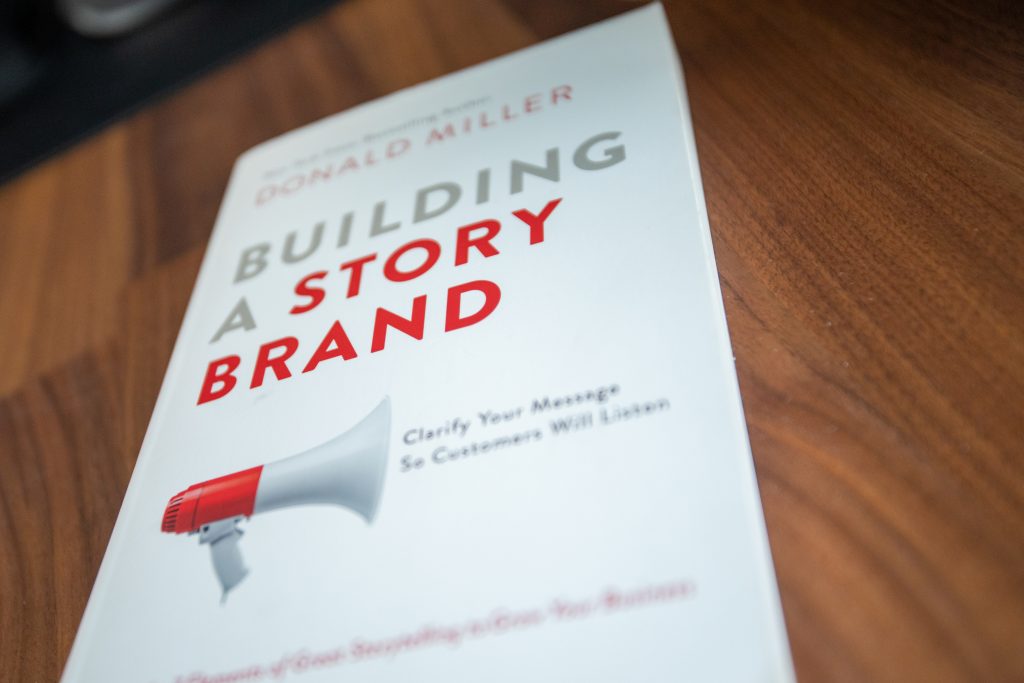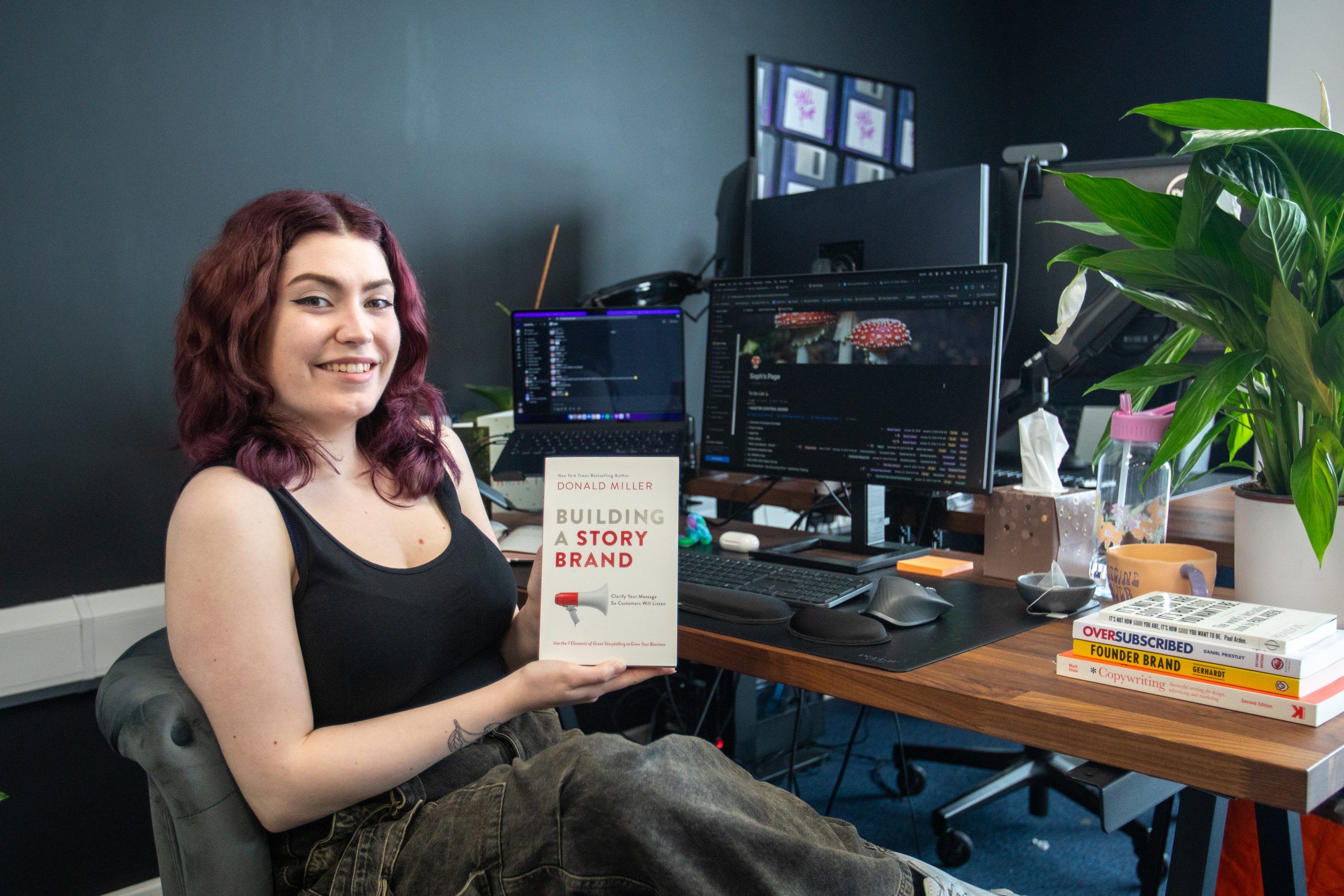Soph Reads Stuff – Building A Story Brand: Clarify Your Message So Customers Will Listen
Hi book friends!
It’s time for another adventure into the world of story branding, this time with a look inside Donald Miller’s Building A Story Brand: Clarify Your Message So Customers Will Listen.
If you’ve been here for a while, you’ll know that this is the third book I’ve reviewed that deals with telling your story as part of your marketing efforts. The last two – Founder Brand and Storyategy – only scored 3 and 2 stars respectively, so it’s not been a brilliant experience to date. But who knows – maybe third time’s the charm?
Let’s find out.
What’s inside?
Unlike Storyategy, Building A Story Brand had me hooked from the first line. It took everything I thought I knew about storybranding and turned it upside down by telling me “Your customer should be the hero of the story, not your brand”. That’s the complete opposite of Storyategy’s Character Archetype exercise, where Search Stack happily declared ourselves as the heroes. The contradiction could not be more on the nose. Making your customer the main character makes perfect sense when you think about it, but until I saw the argument spelled out in black and white like that, it genuinely hadn’t occurred to me.
So, if your customers are the heroes of the story, who are you?
According to Building A Story Brand, we should be taking on the role of guides. The most compelling stories feature a hero (your customer), who faces a challenge (their pain points), and needs help overcoming them from a wise, experienced friend. That’s where you come in. You or your company exist to help your customers solve their problems, and your marketing explains how to do just that.

As if Donald hadn’t already gotten me hooked enough, he then brought in a Star Wars analogy. On page 78, he wrote:
“When Luke Skywalker meets Yoda, he encounters the perfect guide. Yoda is the endearing character who understands Luke’s dilemma and empathetically coaches him to use the Force. This empathy would go nowhere, of course, were it not for Yoda’s authority as a Jedi himself.”
While ‘empathetic’ isn’t quite how I would have described Yoda in The Empire Strikes Back, you can clearly follow – and enjoy – Donald’s argument.
Once you’ve accepted that you are a balding green little space wizard, Building A Story Brand takes you through the process of creating your Brandscript. This is broken down into 7 simple steps, each of which gets its own chapter in the book. What’s more, with each copy of the book you get access to online tools to help you build out your brandscript, saving you from scribbling notes in the margins and exercise pages. So not only is this book full of advice, it also comes with practical applications.
Maybe my favourite thing about the book is the amount of practical tips that it includes. There’s a little bit of everything – from editing instructions to harsh truths. Here are the ones that resonated with me the most:
- The more you can cut out, the better your writing will be
- Make your CTAs clear and confident
- Include a P.S. on nurture emails
- Promote transformation in your case studies
- “Where there’s no story, there’s no engagement.”
Most of the above is just me paraphrasing the points, but that last one is a copywriter’s dream. It’s a perfect quote; excellently phrased, and presenting a powerful message. That’s how well-written this book is.
My only criticism of the book isn’t even really criticism, it’s just a result of reading other similar books first. Building A Story Brand included ideas such as positioning yourself against a villain, which I’ve read and shared before. This made the book feel slightly less original than it could have been, but isn’t inherently a bad thing. These topics are generally strong principles that should be implemented by anybody taking a story branding approach, so I can’t really object to their inclusion in the book.
My recommendation:
I’ve kept my cards pretty close to my chest for this one, but it’s time to spill the beans. I thought Building A Story Brand was a brilliant book. It was well written, well argued, and well presented. Everything from its tone to its font and layout landed perfectly. I also feel like I learned new and interesting things throughout the book, despite the fact that it repeated a couple of key points that I’ve heard before.
Ultimately, for someone who’s new to story branding, this is the ideal book. It has a helpful framework to use alongside the lessons as you read, and it covers everything that you need to know about the topic. If you’re a writer and/or marketer like me, this is the storybranding book for you.
However, as any Soph Reads Stuff fan will know by now, a book needs to make me FEEL things if it wants to take a top spot. Sadly, Building A Story Brand neither made me laugh nor cry, so it is, in my opinion, limited to a 4* review, but that doesn’t mean I won’t be raving about it to anybody who will listen. Not everything can make me cry as much as Steve Jobs.
Rating: 💜💜💜💜🤍
TL;DR
Building A Story Brand is by far the best book I’ve read on the topic. It’s well written, neatly presented, and makes far more compelling points about narratives and writing for an audience than the other story-based books that I’ve read so far. It’s definitely worth a read!
Want to chat about books? Find me on LinkedIn –> Sophie Colclough 🥰

